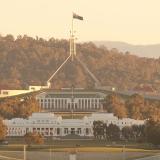Statements of Expectations are issued by the responsible Minister to provide greater clarity about government policies and objectives relevant to an agency, including the policies and priorities it is expected to observe in conducting its operations. The Accountable Authority under the Public Governance, Performance and Accountability Act 2013, in the case of NHMRC, the CEO, respond to this statement with their Statement of Intent.
NHMRC recently received a Regulatory Statement of Expectations from the Minister for Health and Aged Care highlighting government expectations in relation to how the Office of NHMRC supports and reports on the independent regulatory functions of the Embryo Research Licensing Committee.
Statements of Expectations
Professor Steve Wesselingh
Chief Executive Officer
National Health and Medical Research Council
GPO Box 1421
CANBERRA ACT 2601
Dear Professor Wesselingh
I write to outline my expectations of how the National Health and Medical Research Council (NHMRC) will achieve its regulatory objectives, carry out its regulatory functions, and exercise its regulatory powers.
Whilst the Government recognises the statutory independence of the Embryo Research Licensing Committee (ERLC) of NHMRC, it notes that you, as NHMRC Chief Executive Officer (CEO) are the Accountable Authority for NHMRC under the Public Governance, Performance and Accountability Act 2013 (PGPA Act) for these regulatory functions.
This Statement of Expectations (SOE) will assist with the Australian Government's commitment to effective governance and performance of regulatory functions, guided by the PGPA Act. It forms part of the Government’s commitment to good corporate governance of regulatory bodies and reducing unnecessary burden on business and the community.
Overview
As the responsible Commonwealth Minister, this SOE sets out my expectations of the regulatory function undertaken by the ERLC. That being, to administer the human embryo research regulatory framework established by the Research Involving Human Embryos Act 2002 (RIHE Act) and the Prohibition of Human Cloning for Reproduction Act 2002 (PHCR Act).
These Acts establish a framework to prohibit certain practices, such as human cloning, and regulate the uses of excess assisted reproductive technology (ART) embryos, the creation or uses of other human embryos created through processes other than fertilisation and the practice of permitted mitochondrial donation techniques in Australia.
The Government recognises and respects the independence of the NHMRC CEO as the Accountable Authority. The Government also recognises and respects the independence of ERLC in its delivery of the agency’s regulatory functions. However, the Government is of the view that regulators should have a risk-based approach to compliance obligations, engagement and enforcement that allows for proportionate responses appropriate to the nature and seriousness of identified risks. This allows regulators to achieve objectives more effectively while recognising that it is not possible to eliminate all risks.
The Government's policy priorities and objectives
Regulatory reform agenda
The regulatory reform agenda is a key component of the Government's plan to boost Australia's productivity and lower the cost of living by ensuring a fit for purpose regulatory environment.
The Government is looking at ways to boost productivity through reducing unnecessary or duplicative regulatory costs. Cooperating with the states and territories and working with international partners identifies opportunities to improve the quality of regulation and lower the cost of living for Australians.
The Government is also improving regulator performance, capability and culture through regulatory stewardship. This supports the Government's commitment to Australian Public Service reform by building trust in government and its institutions and by putting business and community at the centre of policy and services.
I expect NHMRC to contribute to the regulatory reform process by:
- seeking opportunities to reduce duplication and streamline processes in order to improve efficiency and lift productivity, including international harmonisation or alignment with international regulators, if appropriate
- acting in accordance with regulator best practice in its decision-making, policies, processes and communications practices, in order to maximise transparency and minimise compliance costs
- applying the Resource Management Guide 128 Regulator Performance to its regulatory functions to assess its performance and engagement with stakeholders
- incorporating regulator performance reporting into the entity's reporting processes, as required by Resource Management Guide 128 Regulator Performance under the Public Governance, Performance and Accountability Act 2013, Public Governance and Performance and Accountability Rule 2014 to support greater transparency and accountability of regulator performance
- giving consideration of cost recovery arrangements, if appropriate.
Principles of regulator best practice
In exercising its functions and powers in accordance with these principles, I expect NHMRC to display the following principles of regulator best practice:
- Continuous improvement and building trust:
- use qualitative and quantitative analysis as important tools for assessing and reporting on performance, and to support continuous improvement
- promote a work culture that builds public confidence in NHMRC’s work and promotes trust in Government decision-making.
- Risk-based and data-driven:
- actively understand, engage with and effectively mitigate strategic risks in order to successfully manage its regulatory functions without unnecessarily impeding the operations of regulated entities
- use data sources that meet relevant data assurance standards for assessing and reporting on the quality of statistical information.
- Collaboration and engagement:
- Open, transparent and consistent engagement with stakeholders including industry, government and the broader community is crucial to maintaining competent and innovative regulatory practices. Consequently, I expect NHMRC to:
- seek opportunities to engage and consult genuinely with stakeholders
- be receptive to feedback and diverse stakeholder views
- seek to increase transparency in decision-making processes
- provide up-to-date, clear and accessible guidance and information to assist regulated entities with compliance, including the sharing of information/intelligence as appropriate and in adherence to any secrecy or privacy obligations.
Innovation and regulatory change
I expect NHMRC to continually monitor the environment in which ERLC operates to ensure regulatory approaches keep pace with changes in technology, industry practices, international regulation, and community expectations.
I also expect NHMRC to regularly review and, where necessary, adjust policies, protocols and operational procedures, to ensure ERLC can respond to the changing social, technological and international regulatory environment and commercial context in which it operates.
Relationship with Minister and portfolio
As noted earlier, the Government and I appreciate and respect the independence of ERLC in its delivery of the agency’s regulatory functions. I ask that you, as the Accountable Authority, provide me with accurate and timely advice on significant issues impacting on ERLC’s delivery of these functions so that the Government can respond promptly to any policy challenges.
Statement of Intent
I look forward to NHMRC’s reply to this SOE with a Statement of Intent outlining how you will implement the above-mentioned expectations.
I request that this SOE and corresponding Statement of Intent be made available to the Australian community through NHMRC’s Corporate Plan or Annual Report.
Yours sincerely
Mark Butler
Minister for Heath and Aged Care
11 November 2024
Statement of Intent
The Hon Mark Butler MP
Minister for Health and Aged Care
Parliament House
CANBERRA ACT 2600
Dear Minister
This Statement of Intent (SOI) responds to the Statement of Expectations (SOE) dated 19 November 2024. It sets out my intentions regarding how NHMRC will support the Embryo Research Licensing Committee (ERLC) to achieve its regulatory objectives, carry out its regulatory functions, and exercise its regulatory powers. This SOI outlines NHMRC’s approach to regulatory stewardship, integrating the principles of regulator best practice and stakeholder relationship management, the Government’s policy priorities, and innovation and regulatory change.
Overview
As the Government’s lead agency for funding health and medical research, NHMRC has a unique role in the Australian health system. It invests in the creation of new knowledge about the origins, prevention and treatment of disease and the promotion of health and wellbeing. Through clinical, public health and environmental health guidelines NHMRC supports the translation of research into health practice and policy. By providing guidance on responsible research practices and ethical issues, NHMRC fosters the highest standards of ethics and integrity in the conduct of research and the delivery of health care.
NHMRC additionally administers the Research Involving Human Embryos Act 2002 (RIHE Act) and the Prohibition of Human Cloning for Reproduction Act 2002. These Acts were developed to address community concerns about scientific developments in relation to human reproduction and the use of human embryos in research activities. The legislation establishes a framework to prohibit certain practices, such as human cloning, and regulate the uses of excess assisted reproductive technology (ART) embryos, the creation or uses of human embryos created through processes other than fertilisation and the practice of permitted mitochondrial donation techniques in Australia. The RIHE Act establishes ERLC, a principal committee of NHMRC, as the national regulator of activities defined in the Acts.
Regulatory stewardship
Stewardship covers the range of functions that ERLC delivers. It helps ensure that the regulation of human embryo research is efficient and effective in meeting its objective to protect the health and safety of the community whilst enabling innovative research. My agency will seek to embed the principles set out in Resource Management Guide 128 – Regulator Performance (RMG 128) under the Public Governance, Performance and Accountability Act 2013, and will:
- ensure that the policies, protocols and procedures that support the human embryo research framework is subject to are regular review to maintain their currency
- take a whole-of-system, life-cycle view of regulation that balances legislative intent and community expectations to support innovative health and medical research
- adopt a proactive, collaborative approach to the monitoring and evaluation of the regulatory framework to ensure it remains fit-for-purpose.
To achieve this, NHMRC will engage with other Commonwealth regulators, particularly in the Health portfolio, and learn from their regulatory expertise and where appropriate, to help drive improved regulator performance at a whole-of-system level.
Principles of regulator best practice
Consistent with your expectations, NHMRC will continue to support ERLC to implement their functions in ways that realise the three main principles of RMG 128.
Continuous improvement and building trust
ERLC will continue to identify opportunities for continual improvement and ensure practices are fit-for-purpose. This will include:
- adopting a whole-of-system perspective, continuously improving performance, capability and culture, to build trust and confidence in Australia’s regulatory settings
- using quantitative and qualitative analysis as important tools for assessing and reporting on performance. Delivery against performance measures will be reported in NHMRC corporate documents, thereby supporting continuous improvement
- promoting a culture that builds public confidence in NHMRC’s work and promotes trust in government decision-making.
Risk-based and data-driven
ERLC will continue to maintain and review compliance and enforcement of the embryo research regulatory framework and manage risk appropriately and in line with the legislation. This will include:
- seeking opportunities to remove any duplication and streamline processes to improve efficiency and lift productivity
- maintain essential safeguards, using data and digital technology to manage risks proportionately to minimise regulatory burden on applicants and to support those it regulates to comply with and enhance their understanding of the requirements of the legislation
- actively understand, engage with and effectively mitigate strategic risks to successfully manage its regulatory functions
- use data sources that meet relevant data assurance standards for assessing and reporting on the quality of statistical information, wherever possible.
Collaboration and engagement
ERLC will continue to ensure that the regulation of embryo research in Australia is transparent and responsive. That regulation is implemented in a modern way, with a focus on being open, transparent and consistent when engaging with stakeholders. This will include:
- seeking opportunities to engage and consult genuinely with stakeholders on any significant changes to how the regulatory framework is implemented
- being receptive to feedback and diverse stakeholder views
- being transparent and consistent in decision-making processes
- providing up-to-date, clear and accessible guidance and information to assist regulated entities with compliance.
NHMRC acknowledges the importance of the principles of regulator best practice in ensuring compliance with national standards and maintaining constructive stakeholder relationships in the regulatory environment. The agency will continue to embed the principles of regulator best practice and strengthen reporting to evaluate performance.
Innovation and regulatory change
ERLC, supported by NHMRC, will continue to monitor the regulatory environment to ensure that, in as far as the legislation will facilitate, the regulatory approach keeps pace with changes in technology, research innovation and community expectations. The agency will also regularly review and, where necessary, adjust protocols and operating procedures to ensure that ERLC remains agile and responsive.
Relationship with Minister and portfolio
As required under the RIHE Act, ERLC will continue to report twice a year to the Parliament of Australia though your office to maintain consistent, timely and transparent engagement with parliamentarians on the performance of its functions and the activities of the licence holders it regulates.
As requested, I will make the SOE and this SOI available to the Australian community— initially via the NHMRC website, ensuring that they, along with the associated performance measures and reporting, are subsequently integrated into NHMRC’s corporate reporting processes.
Yours sincerely
Professor Steve Wesselingh
Chief Executive Officer
6 December 2024


